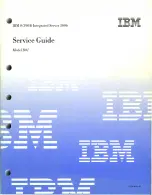
Table 4: IP Address Zone Types
Description
Zone Type
Used for non-iSCSI enabled subnets.
None
All IP addresses are in one zone. This is the default zoning setting.
With two network switches, iSCSI connections can be routed over the inter-switch link.
Single
One zone includes the IP addresses from the top half of the subnet; for example, 192.168.1.128 to
192.168.1.254. The other zone takes the IP addresses from the bottom half of the subnet; for example,
192.168.1.1 to 192.168.1.127
Bisect
The IP addresses are grouped by their last bit. One zone includes the even-numbered IP addresses, such
as 192.168.1.2, 192.168.1.4, 192.168.1.6, and so on. The other zone includes the odd-numbered IP ad-
dresses, such as 192.168.1.1, 192.168.1.3, 192.168.1.5, and so on.
Even/Odd
IP address zones are useful for configurations that use two switches, where you want to establish connections that avoid the
Inter-Switch Link. For IP address zones to work, the host and the array must have their data IP addresses configured with half
of their IP addresses from one zone connected to one switch and the other half of its IP addresses from the other zone
connected to the other switch. For example, assume that:
•
There is a single subnet, 192.168.1.0/24.
•
There are two zones, defined as Red and Blue.
•
Red zone consists of:
•
Host IP 192.168.1.1
•
Array Data IP 192.168.1.3
•
Array Data IP 192.168.1.5
•
Blue zone consists of:
•
Host IP 192.168.1.2
•
Array Data IP 192.168.1.4
•
Array Data IP 192.168.1.6
In the IP Address Zone, the host IP addresses in the Red zone only establish connections with the data IP addresses in the
Red zone. And the host IP addresses in the Blue zone only establish connections with the data IP addresses in the Blue zone.
In this way, iSCSI connections do not use inter-switch link and thereby maximize I/O performance.
Install the HPE Storage Array 16















































